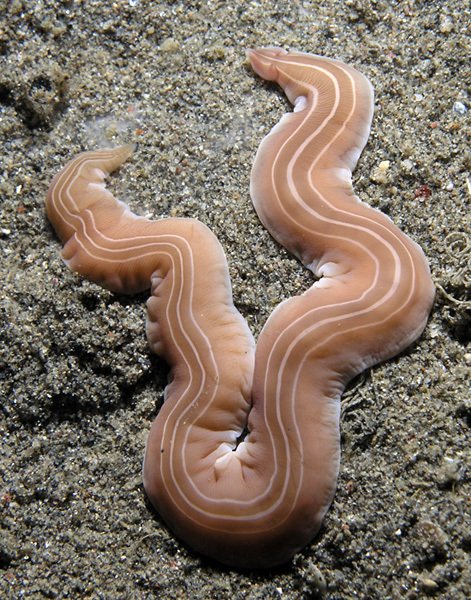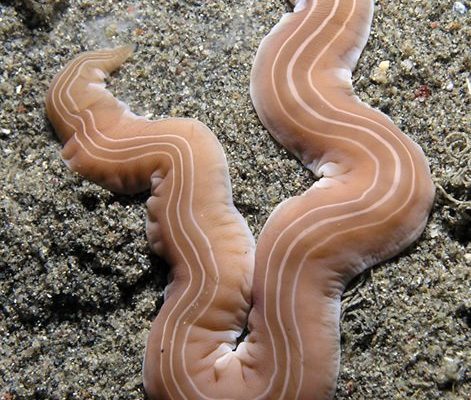
Think of ribbon worms like the elusive celebrities of the ocean floor. They’re not always in the spotlight, but their lifestyles and habits are incredibly captivating. You might be surprised to learn that they can stretch up to 30 meters long! These marine creatures can be found in various environments, from sandy shores to deep-sea habitats. In this article, we’ll unravel some of the common misconceptions about ribbon worms, clearing up any confusion you might have and diving into what makes them so special.
1. Ribbon Worms Are Not Worms
You might think of ribbon worms as typical worms, but that’s a misconception. While they share some similarities with earthworms, they belong to a different family altogether. Ribbon worms are actually part of a phylum known as Nemertea, which makes them more closely related to creatures like flatworms and even some mollusks rather than true worms. This distinction is essential because it highlights the diversity of life forms within marine ecosystems.
Unlike your garden variety worms, ribbon worms have a unique feeding apparatus called a *proboscis*. This organ allows them to capture prey, often in a matter of seconds. When hunting, they can shoot their proboscis out and ensnare small fish or invertebrates. It’s a remarkable adaptation that sets them apart from the simpler feeding mechanisms of their terrestrial cousins. So, while they might look like worms, their biology tells a very different story.
2. They’re Not All Colorful
Another common misconception is that all ribbon worms are bright and colorful. Sure, some species boast vibrant hues, but not all ribbon worms are created equal. In fact, many are quite drab, sporting muted colors that blend into their environments. The bright colors serve a purpose, though; they can act as warnings to potential predators about a ribbon worm’s toxicity.
Here’s the thing: *coloration can be an evolutionary advantage*. The drab species might thrive in environments where blending in is crucial for survival. Think of them as the introverts of the ocean—keeping a low profile while their colorful counterparts steal the show. Understanding the variety in their appearance can give us insight into their habitats and behaviors.
3. They Aren’t Dangerous to Humans
It’s easy to assume that any sea creature with a long, squirmy body might pose a threat, but most ribbon worms are harmless to humans. While some species can produce venom to subdue their prey, they generally don’t pose a danger to us. In fact, they’re more likely to shy away from contact than to engage. If you happen upon a ribbon worm while exploring a tide pool or at the beach, you can observe it without fear.
However, it’s essential to respect wildlife. Although ribbon worms aren’t harmful, other sea creatures might be. If you’re ever unsure, it’s always best to admire these creatures from a distance. Remember, they play a vital role in their ecosystems, and understanding their behaviors can help us appreciate their place in the ocean.
4. They Don’t Live Exclusively in the Ocean
Many people believe that ribbon worms are only found in the ocean, but that’s not entirely true. While they predominantly inhabit marine environments, some species can also be found in freshwater and even damp terrestrial areas. It’s a bit like saying that all birds can only fly; indeed, many can, but some prefer their feet on the ground.
The adaptability of ribbon worms to different environments showcases their evolutionary resilience. They can thrive in various habitats, from deep-sea regions to coastal estuaries, and this flexibility allows them to exploit diverse food sources. This adaptability is a significant factor in their successful survival, making them a fascinating subject for marine biologists and enthusiasts alike.
5. Their Diet is More Complex Than You Think
You might be wondering about what ribbon worms eat. The easy assumption is that they feast exclusively on small fish or invertebrates. While that’s true to an extent, their diet is more complex than it seems. Ribbon worms are opportunistic feeders, meaning they’ll consume whatever prey is available. This can include crustaceans, snails, and even other worms when times are tough.
Their feeding strategy plays a crucial role in their ecosystem. By preying on various species, ribbon worms help control populations of smaller marine life, ensuring a balance in their habitats. This balance is vital for maintaining healthy ecosystems since each creature plays a role—just like pieces of a puzzle.
6. Ribbon Worms Can Regenerate
One of the most fascinating features of ribbon worms is their ability to regenerate lost body parts. If they lose a segment of their body, they can regrow it, which is particularly useful in evading predators. Imagine being able to regenerate a lost finger or toe—how cool would that be? This capability isn’t just for show; it’s a survival mechanism that has evolved over time.
Regeneration also plays a role in their reproduction. Some species can reproduce asexually through fragmentation, meaning a part of their body can grow into a new worm. This adaptability not only enhances their survival but also contributes to the population dynamics of ribbon worms in various ecosystems.
7. They’re Not All the Same Size
It’s a common misconception that all ribbon worms are long and skinny. While many species do indeed stretch out to impressive lengths, their sizes can vary dramatically. Some species are only a few centimeters long, while others can reach lengths exceeding 30 meters.
This variety in size is due to the different habitats they occupy and their evolutionary pathways. Smaller ribbon worms often reside in microhabitats where space is limited, while larger ones might explore deeper waters or more expansive environments. This size variation is a testament to the diversity within the Nemertea phylum, emphasizing the unique adaptations of each species.
8. They Are Not Just a Marine Curiosity
Finally, it’s a misconception that ribbon worms are merely a curiosity of the ocean. While they might not be as famous as dolphins or sharks, they play an important role in marine food webs and sediment health. By feeding on detritus and small creatures, they contribute to nutrient cycling and help keep ecosystems balanced.
Studying ribbon worms also helps scientists understand larger environmental issues, like the impacts of climate change on marine life. Their existence can reveal important insights into ocean health, making them valuable indicators for researchers. So, while they might not make the headlines, their significance in the ecosystem is anything but trivial.
In conclusion, ribbon worms are far more complex and interesting than they might first appear. By debunking these misconceptions, we can gain a greater appreciation for these unique creatures that inhabit our oceans. Next time you encounter a ribbon worm, remember the fascinating world of diversity and adaptability they represent. The ocean is full of surprises, and understanding creatures like ribbon worms is just the beginning of uncovering its many mysteries.

